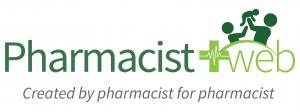Contents
Title Page number
Bio-kult overview in Antibiotic associated diarrhea 3
Background to Antibiotic associated diarrhea 4
Current Management 4
Efficacy 4
Safety 5
National Health Technology assessments 6
Comparisons 6
Adherence 6
Cost 7
Treatment of AAD 7
Information source 7
References 8
Bio-Kult overview in Antibiotic associated diarrhea
| Brand | Bio-Kult |
| Ingredients | • Cellulose (bulking agent)
• Vegetable Capsule (Hydroxypropylmethyl Cellulose). Live bacteria cultures: • Bacillus subtilis PXN 21 • Bifidobacterium bifidum PXN 23 • Bifidobacterium breve PXN 25 • Bifidobacterium infantis PXN 27 • Bifidobacterium longum PXN 30 • Lactobacillus acidophilus PXN 35 • Lactobacillus delbrueckii ssp. bulgaricus PXN 39 • Lactobacillus casei PXN 37 • Lactobacillus plantarum PXN 47 • Lactobacillus rhamnosus PXN 54 • Lactobacillus helveticus PXN 45 • Lactobacillus salivarius PXN 57 • Lactococcus lactis ssp. lactis PXN 63 Streptococcus thermophilus PXN 66
NB: May contain soya and milk as these are used in the growth media of the strains. Traces of milk are at a level that would not affect lactose intolerance sufferers. |
| Gluten-free | Yes |
| Current indication | Maintaining a healthy gut (including diarrhea), and antibiotics |
| Dose | 1 – 2 capsules once or twice daily with food. If taking two or more capsules daily, you may wish to split the dose between two meals.
If you are taking antibiotics: Take 4 capsules daily, ideally at a different time of the day from the antibiotics. Continue taking for at least 2 weeks after completition of the antibiotic course
Bio-Kult capsules can also be pulled apart and the contents sprinkled on to food, mixed in a drink or swallowed whole. |
| Anticipated place in therapy | 1. We recommend that Bio-Kult should be taken at the same time as antibiotic therapy (although at least 2 hours apart) and continued for 2-4 weeks after completion of the antibiotic course at a dose of 4 live bacteria capsules a day.
2. We also recommend bio-kult be considered as a supplement for all patients (providing clinically acceptable) at risk of AAD. |
| Administration | Oral |
| Cost | The 30-day cost of Bio-kult is £8.99 for a pack of 30
|
Background to Antibiotic associated diarhhoea
Antibiotic associated diarrhea is a common complication associated with the use of antibiotics. Rates of AAD vary from 5-39% depending on the type of antibiotics used. It often leads to complications that can range from mild diarrhea to severe pseudomembranous colitis. AAD can occur in a wide variety of healthcare settings, but is more commonly associated with hospitals. The pathogenesis of AAD is thought to be as a result of the disruption of the normal microbiota resulting in pathogen overgrowth or metabolic imbalances. AAD can be very disruptive in hospital settings, as outbreaks can occur1. Clusters of cases have been documented further suggesting that transmission of clostridium difficile and elaboration of toxin is a Noscomial disease. The infection can lead to patients receiving further antibiotics (vancomycin) in severe cases. It also means that the hospital dedicates more resources and cost to treating that patient.2 Cases of C.difficile in the NHS are estimated to increase length of stay by 21 days, or to cost £4000-£10,0006.
Current management
In UK, Antibiotic associated diarrhea is managed though a combination of local guidelines and following the NICE Guidelines and the recommendations of Public Health England, who recommend stopping the antibiotic, if possible to allow the normal intestinal flora to be re-established.3 There also needs to be an assessment to distinguish, whether a patient has C.difficile or not, to determine appropriate management (including treatment with further antibiotics) 3.
Efficacy
A Cochrane review of the use of probiotics to prevent C.difficile diarrhea associated with antibiotic use. The review included 31 randomized trials, with a total of 4492 participants. Twenty-three studies (4213 participants) assessed the effectiveness of probiotics in preventing C.difficile-associated diarrhea (CDAD). The results suggested that when probiotics are given with antibiotics, they reduce the risk of CDAD by 64%. The results also suggest that probiotics decreased the risk of developing the side effects associated with antibiotics. In conclusion, they stated that moderate quality evidence suggested probiotics are both safe and effective for preventing clostridium difficile associated diarrhea4.
Another study in America, a meta-analysis, investigated the use of probiotics for the prevention of Antibiotic associated diarrhea and treatment of c.difficile. The results from 25 randomized controlled trials (RCTs), demonstrated that probiotics significantly reduced the relative risk of AAD (RR = 0.43, 95% CI 0.31, 0.58, p < 0.001). The results from six randomized trials, probiotics had significant efficacy for CDD (RR = 0.59, 95% CI 0.41, 0.85, p= 0.005). They concluded that probiotics are a promising treatment option. They identified 3 probiotics ( Saccharomyces boulardii, Lactobacillus rhamnosus GG, and probiotic mixtures) which they stated significantly reduced the development of antibiotic-associated diarrhea. They also concluded that Only S. boulardii was effective for CDD7.
The World gastroenterology organisation (WGO) guideline, stated that different probiotic strains (including L.reuteri, L.rhannosus GG, L.casei and Saccharomyces cerervisiae (boulardii) are useful in reducing the duration and severity of acute infectious diarrheal illness in children by approximately 1 day. The WGO guideline further stated that there is strong evidence of the efficacy of S.boulardii or L.rhannosus GG in adults and children who are receiving antibiotic therapy. They, report that one study indicated that L.casei DN-114 001 is effective in hospitalised adult patients for preventing antibiotic-associated diarrhea and C.difficile diarrhea8.
Safety
During a systemic and meta-analysis of 23 randomized clinical trials including 4213 patients, side effects were assessed in 26 studies (3964 participants). The most common side effects reported in these studies include abdominal cramping, nausea, fever, soft stools, flatulence, and taste disturbance. They stated that short-term use of probiotics appears to be safe and effective when used along with antibiotics in patients who are not immunocompromised or severely debilitated.4
Bio-kult contains a high concentration of live bacteria. Therefore, if there is a pathogenic overload in your gut, and a patient starts off with a high dose, in a small number of people a ‘die-off’ side effect, such as bloating, may be experienced for a few days5.
National Health Technology Assessments
NICE are not considering the use of probiotics for a full technology appraisal. NICE highlighted that although; there are promising reports for probiotics use. Most of the studies have methodological limitations.
Evidence summaries produced by NICE can be found at:
http://www.nice.org.uk/guidance/cg84/resources/guidance-diarrhoea-and-vomiting-in-children-pdf
Comparison
Bio-kult compared to Yakult provides the following advantages:
- A longer expiry date
- Removes the requirement for a fridge (cold storage)
- Flexible – provides options to be taken as a tablet or sprinkle on food
- Yakult – contains sugar. Care would be required for Diabetics or epileptic patients on ketogenic diet. Although, a light version is available, but still contains sugar
- Save on time – generally quicker to take a capsule
- Improve compliance – easier to carry a capsule
- Eliminates taste preference
Adherance
We propose that Bio-kult capsules are easier to carry, and since patients are already familiar with the concepts of taking capsules. Therefore, a capsule should increase compliance. We propose, that the absence of a requirement to store the product in a fridge, would be beneficial to the patient, and would be more patient friendly. Finally, the absence of a taste, may improve compliance, as patients have different taste preference.
Cost
Prophylaxis of AAD
The 30-day cost of Bio-kult is £8.99 for a pack of 30. Prophylactic treatment of AAD (1 capsule a day).
Alternatively, 30-day cost of Bio-kult from the following packs, are as follows:
- A pack of 60 cost £14.95, and would provide a 30-day treatment for £7.48 Prophylactic treatment of AAD (1 capsule a day).
Treatment of AAD
The 30-day cost of Bio-kult is £29.45 for a pack of 120 (4 capsules a day)
Information Sources
If you require further information, please contact the Protexin medical affairs team:
- By telephone: 01460243230
- By email: info@protexin.com
Reference
- McFarland, L.V. (2008) Antibiotic-associated diarrhea: epidemiology, trends and treatment. Furutre Microbiol. 3(5), 563-78
- NF, (1994) Antibiotic-induced diarrhea and pseudomembranous colitis. Post grad med. 95(8), 111-4
- Public Health England (2013) Updated guidance on the management and treatment of Clostridium difficile infection.Public Health England. hpa.org.uk
- http://www.cochrane.org/CD006095/IBD_the-use-of-probiotics-to-prevent-c.-difficile-diarrhea-associated-with-antibiotic-use website accessed on 13/02/2015
- http://www.bio-kult.com/faqs#q8 website accessed on 13/02/2015
- https://www.stgeorges.nhs.uk/wp-content/uploads/2013/09/Clin_2_0_AppD_Prot14.pdf website accessed on 13/02/2015
- http://www.nature.com/ajg/journal/v101/n4/abs/ajg2006155a.html website accessed on 13/02/2015
- http://www.worldgastroenterology.org/assets/export/userfiles/Probiotics_FINAL_20110116.pdf website accessed on 13/02/2015



